Last month we heard from recent Puglia transplant Tina Ferrari on what makes Puglia so special. Today, I’m sharing an interview I did with another expat in Puglia, Blogging from the Boot award winner and maniac-driving ESL teacher, Kate Bailward.
1. I read that you moved to Puglia on a whim to teach ESL. How long have you been there and what was your first impression of the region?
That’s right, I did. After 10 years of touring small-scale UK theatres, acting, singing and dancing for the entertainment of small children, I was knackered, and decided I needed a change of pace. I drifted around for a while, not knowing quite what to do with myself, until one day when Mike and I were chatting about going travelling together. In the course of conversation he mentioned doing an EFL course for himself. A big light came on in my head and I remembered that was what I’d wanted to do originally, before becoming an actor. I looked into courses, applied to one, was accepted, and started the course a few weeks later – from first idea to being fully qualified was a time frame of about 8-10 weeks.
In a similar vein, ending up in Puglia was something that happened without too much thought at all. I was teaching at a summer school in the UK and one of the teachers there had just left the school where I’m now teaching. He suggested I apply here and the rest, as they say, is history. I didn’t really know what to expect from Italy before I arrived. Of course there are the stereotypes of the lecherous men and delicious food, and those facts do, to an extent, hold true, but there’s so much more besides. I’ve been here since October 2009 and am learning something new about the region every day. Last month, for instance, was the Festa di San Nicola. I had no idea that Santa Claus was buried in Italy until now – and not just Italy: Bari, in Puglia!
My first impressions of the region were positive. One of the first things I noticed was the temperature – still hot on 1 October. Delicious. (Of course, it started raining about a week later, and didn’t stop for much of the winter, but first impressions do last!)
The other thing that I noticed was the stone of the region. Lecce stone is apparently highly sought-after for its colour and ease of carving, and you can see why at every turn. Sure, there are ugly concrete houses all over the place, but go into the centro storico of any of the towns here and you see magnificent carvings and this beautiful, buttery yellow, soft stone. Gorgeous.
2. What have you noticed about traveling in southern Puglia? Is it easy to get around via trains or public transportation or is it, like Calabria, easier with a car?
Within region, it’s easier to go by car. My town is, despite being reasonably important within the area, placed on a branch line which doesn’t take you very far at all – you have to link to Lecce to be able to get anywhere. The trains to Lecce from here only run during the daytime, so if you want a night out on the town you have to drive, which can be inconvenient if you want to go out for a drink. 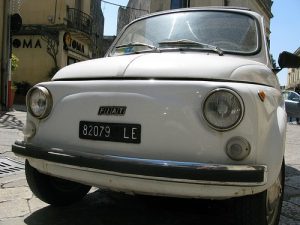
It is, however, much more picturesque to go by train, and I’m trying to do so more and more, rather than jumping straight in the car. Apart from anything else, trains are more environmentally friendly, as well as giving you a cast-iron excuse to chat to strangers. Well, when you’re stuck in a railway carriage, what else is there to do but have a conversation?
3. If your best friend was planning to visit you in Puglia, what three things would you make sure she saw?
I’d definitely head to Otranto. In fact, that’s just where I took my best friend when she visited in February. Sadly, at that point in time, it was pretty nippy, but we had a lovely day nevertheless, wandering around the town.
The castle is disappointing inside (it’s all been converted into conference rooms, so don’t bother going in), but there are breathtaking views from the top of the castle walls. Wandering up through the walled part of the old town is gorgeous, and the cathedral square at dusk is fabulous. Stop and watch the swifts swooping around the square as the sun goes down, and head into the cathedral if you get a chance.
If you arrive while a service is going on (as I always seem to do!) then head into the cathedral museum instead, on the opposite side of the square. It’s packed with pictures and artefacts, along with some lovely mosaic floor sections similar to the ones in the cathedral.
Santa Maria di Leuca, where the Ionian and Adriatic seas meet, is also worth a visit. Again, I went there in the winter time, but I have something of a soft spot for out of season seaside towns, so I rather liked the bleakness of it. Head up to the basilica and look out to sea to see if you can see the line between the seas – I couldn’t, but it’s alleged to be there!
Finally, I’d take her swimming in the Adriatic. Otranto beach is usually packed with people, but if you head along the coast a bit and don’t mind trekking across a field or two, you can reach quieter inlets, where you can dive straight from the rocks into bright blue water. It’s still pretty fresh at the moment (early/mid-May), but not icy. Or not by this English girl’s standards, anyway, and the exhilaration of jumping 6 or 10 foot into clear blue water more than makes up for the chill.
Traveling to southern Italy? Click here to see how I can help you plan your trip to Calabria or southern Italy.



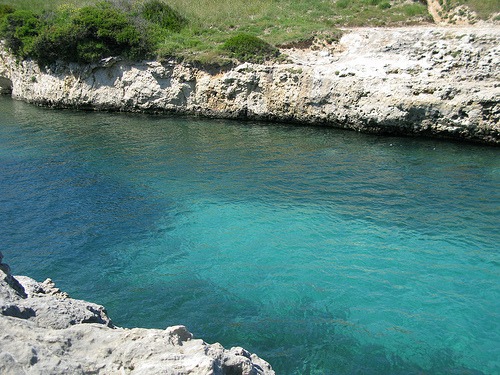
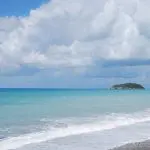
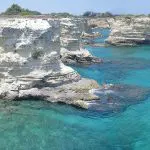
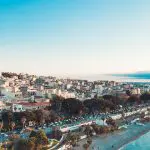

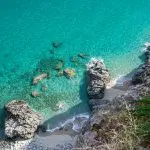
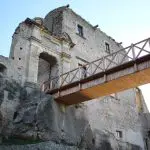
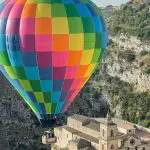
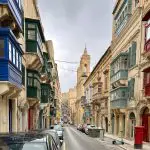
As ever, Kate’s evocative descriptions make me long to experience some of the adventure she is living. It’s rare to feel hungry when reading about stones, but somehow she manages it.
Off to find some water to dive into now… keep up the good work.
Oh yea, she is good alright. I can’t remember what it was now, but she wrote about some kind of food once that I normally wouldn’t have liked and I, too, was hungry afterward!
Hi there cool site! Guy. Fantastic. Wonderful. We’ll take note of your website and use the rss feeds additionally? We’re pleased to search out a lot of beneficial facts here from the send, we wish determine a lot more techniques on this value, thank you for spreading.